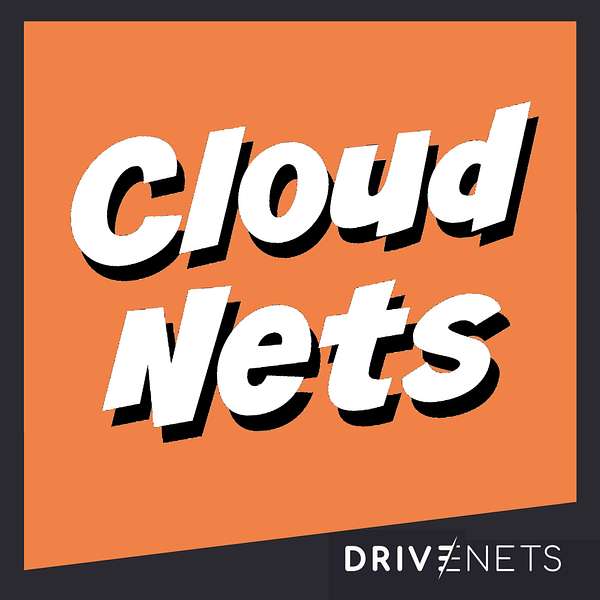
Cloud Nets
Cloud Nets
S4 E3 Autonomous Network
Are autonomous networks coming soon?
We’re taking baby steps, starting with islands of automation and we’re going to automate small, mundane tasks by helping operators develop CI/CD pipelines that allow them to take innovation from their lab to a network digital twin and eventually into production in a much faster way.
Hi, and welcome back to CloudNets,
where networks meet cloud.
And today we’re going to talk about
the road to autonomous network.
And we have our autonomous network and
routing expert, Calin.
Hi, thank you for joining.
Nice to be here.
So Calin, when we envision autonomous networks in the far, far future, we talk about self healing and self configuring networks and some AI entity that will manage it all.
So Calin, is it coming soon?
We’re not there yet as an industry, but it’s in the future and we’re just getting started in this place.
Okay, so no one will give the keys to some AI entities and we’ll all sit home, but we can do something about it right now.
Right, so what are our ideas or vision from DriveNets towards autonomous networks?
Yeah, great.
So what we’re doing is we’re taking baby steps.
We’re going to start with islands of automation and we’re going to automate small, mundane tasks.
Yeah, the boring stuff.
The boring stuff.
And we’re going to do that by helping our operators develop CI/CD pipelines that allow them to take innovation from their lab to a network digital twin and eventually into production in a much faster way.
Okay, so CI/CD basically saves you the need to have a full blown lab and to test any innovation or new feature you have on it, you simply create it in the virtual world like the cloud operators do, and then push it down the network after you’re sure that it works properly.
Exactly.
Network Cloud was born to be in the cloud.
Exactly.
Okay, so this is great.
What else do we work on?
Please let it be related to AI because I need something with AI for the views.
So we’re working on AI Ops.
Oh, to reduce mean time to repair for operators.
How do we do that?
How do we plan to do it?
We’re building a brand new engine.
DriveNets is training our own model that handles and creates root cause analysis with real summarized events for our operators.
So that they basically train the modelon a very large list of alarms and allow it to learn what are the relations between them and how to figure out which alarm is important, what is the root cause analysis exactly.
We take thousands of alarms and we reduce it down to what the operations team needs to focus on in order to resolve the problem. But as we all know, most of the time it takes to repair a problem is to identify what is causing it. Then the rest is usually simple.
Exactly.
Our goal is to become an AI assistant to the operations teams. They can use this as one of their tools in the toolbox when operating their networks.
Great.
And I guess in the future we’ll be able to even reduce, to even increase MTBF because we can know in advance when a fault is going to occur and proactively avoid it.
Exactly.
We’re working on proactive use cases as well to know when something may happen in the network in the future and take steps to prevent it.
Okay, this is cool.
So when you think about autonomous networks, the three things you need to remember is one, it’s not coming soon.
No one will leave the keys to an AI entity anytime soon.
So you need to be prepared, but you don’t need to rush into it.
So the second one is baby step.
The baby steps are islands of automation in which you can implement tasks that will replace the boring stuff you do day after day.
An example is a digital twin that will allow you to test and to develop new features and test it before you push it into the network.
And the third is AIOps. And that means that, for instance, you can do automation on root cause analysis. The AI training procedures learns what is the relation between different alarms and the faults. And you can very fast and you can very quickly identify the alarm and resolve it. In the future, you might be able to foresee the alarm and proactively avoid it.
So this is what’s coming. It’s very exciting and I can’t wait for the future.
Thank you Calin, for telling us about the future.
Thanks for having me here to talk about DNOR and AIOps, and thank you for watching.
See you next time on CloudNets.
